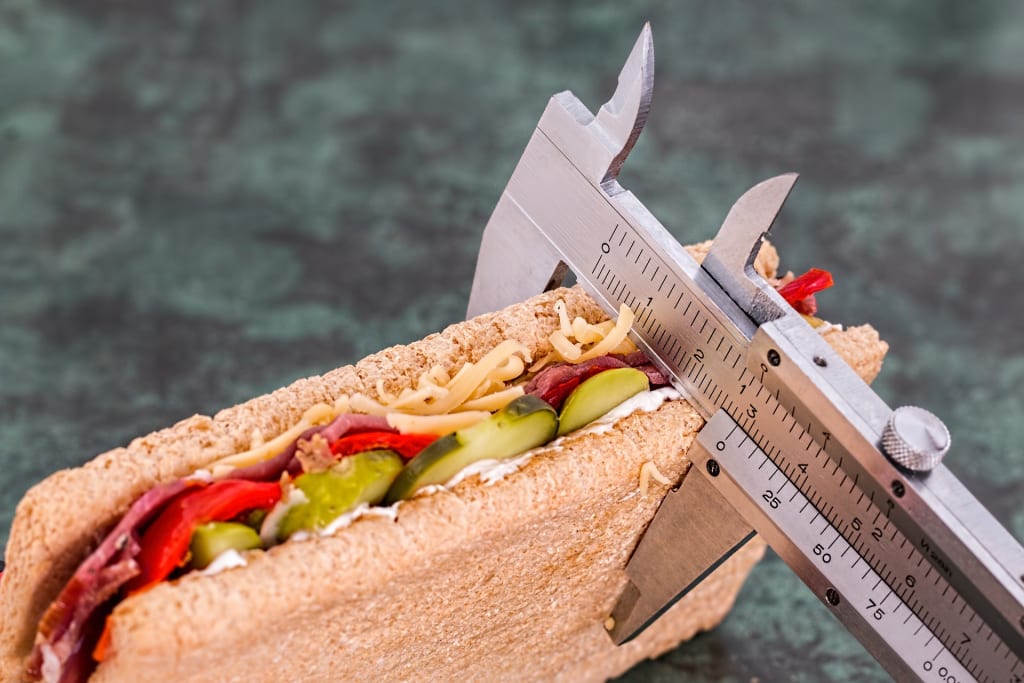Why most people fail at losing weight?
In this blog, I'm going to show you why most people, including you, are destined to fail at losing weight unless you change one crucial thing.

I often discuss the details of optimal diet and lifestyle choices on my channel, so make sure to check those out. However, people often miss this one critical aspect, which eventually leads to failure. Luckily, you’re in the right place. Let me share a quick story to explain.
A few years ago, I owned a fish tank. I had a lot of spare time and was single, so I got a big tank with three giant goldfish. It was a hobby I enjoyed. Watching fish swim is therapeutic. But one day, one of the goldfish got sick and swam upside down. I panicked. Anyone who owns pets can relate to this. Pets are like your babies. I also have a pug, and his rare sicknesses stress me out, usually because he eats something he shouldn't. Dogs are like that—they eat anything.
Pets getting sick is worse because they can't talk and tell you what's wrong, much like babies. I went to the pet store and asked the fish guy, "How do we fix this?" He said something profound: When your fish gets sick, you don’t treat the fish; you treat the water, its environment. He gave me some stuff to put in the water, and the fish got better.
This analogy applies to many things in life. If you want to change, lose weight, and transform your life, you don’t treat the fish—you treat the water. You are the fish, by the way. Translation: If you change your environment, your life will change. Plain and simple, your environment determines your chances of success. Most people don’t change their environment and wonder why they fail repeatedly. If you just treat the fish, it might get better temporarily, but you have to put it back in the contaminated water.
That’s like going to rehab for an addiction but returning to the same environment that got you hooked in the first place. You're destined to relapse. But if you treat the environment, the fish will get better. That's how you give yourself the best chance to succeed. Treat the cause, not the symptom.
For example, if you have metabolic syndrome—abdominal obesity, high blood pressure, high blood sugar, high triglycerides, and low HDL cholesterol—it increases your risk of heart attack, stroke, and diabetes. This disease is caused by poor lifestyle and nutrition. It only makes sense to treat it by improving your lifestyle and nutrition. Stapling your stomach, getting liposuction, or taking medications are like putting a band-aid on a paper cut when you're hemorrhaging.
People don’t get fat from lack of exercise alone. The US has more gyms per capita and some of the highest obesity rates in the developed world. Around 44% of adults are obese, and 3 out of 4 are overweight or obese. Childhood obesity is also at an all-time high. Poor nutrition is the culprit, so spending countless hours at the gym won't fix it. Exercise is beneficial for many reasons, but weight loss isn’t one of them. That's why you see people on cardio machines who look the same despite their efforts.
To reverse metabolic syndrome, you need to fix your diet. The best way to do that is to change your environment. Willpower and motivation aren't enough if your environment remains unchanged. We're creatures of habit, and we thrive in the right environment.
Let’s talk about four levels of your environment, starting with where you live. If your house is full of trigger foods, losing weight will be nearly impossible. Human beings are not wired for self-control. If bad food is visible, you'll eventually give in. The solution is simple: don’t stock bad food at home. Schedule it outside your house if you want it, and don’t bring leftovers home. This small change can lead to significant results.
Replace bad foods with better alternatives, get more active, and make better lifestyle choices. Start going to bed earlier instead of binge-watching TV or playing video games. You’ll lose weight, feel better, have more energy, and feel alive. New identities require new evidence. If nothing changes, nothing will change.
The second level is your social environment. The people you spend time with matter. If your friends eat poorly, you likely will too. You're the average of the five people you spend the most time with. If you want to be healthier, start hanging out with people who have the habits you want to adopt. Joining a gym or group fitness class can help, as you'll be surrounded by like-minded individuals.
If you’re in a relationship, involve your partner in your goals. Couples who undergo transformations together grow stronger together. But if your partner doesn't support you, it will be hard to succeed.
Lastly, your family environment. You can love your family from a distance. If they don't support your goals, spend less time with them. Lead by example and inspire them by achieving your transformation.
Changing your environment is crucial for success. If you want help, help yourself by changing your surroundings. Nothing changes if nothing changes.
Level Three: Social Circle and Friends
Your social circle is a powerful influencer of your habits and behaviors. If your friends have unhealthy habits, chances are you’ll adopt those habits as well. Think about the saying, "You are the average of the five people you spend the most time with." This principle applies to various aspects of life, including health and fitness.
If you frequently hang out with people who eat junk food and lead sedentary lifestyles, you’re more likely to do the same. Conversely, if you surround yourself with health-conscious individuals, their habits will influence you positively. This doesn't mean you need to cut ties with old friends, but you might need to spend more time with those who support your goals.
Joining groups or communities focused on health and fitness can be beneficial. Whether it’s a running club, a yoga class, or a group fitness class, being around people with similar goals can motivate and inspire you. These environments foster a sense of accountability and encouragement, which are essential for maintaining long-term changes.
Level Four: Work Environment
Your work environment plays a significant role in your lifestyle choices. If your job is stressful and leads to unhealthy coping mechanisms like eating junk food or skipping workouts, it can hinder your progress. Many workplaces provide unhealthy food options and foster sedentary behavior, which contributes to weight gain and poor health.
To combat this, bring healthy snacks and meals to work. Find ways to incorporate physical activity into your day, such as taking walks during breaks or using a standing desk. If possible, encourage your employer to promote a healthier workplace by providing healthier food options and opportunities for physical activity.
Changing Your Environment for Success
Now that we’ve covered the different levels of your environment, let's discuss how to effectively change them to support your goals.
1. Home Environment: Start by cleaning out your pantry and refrigerator. Get rid of unhealthy, processed foods and replace them with nutritious options. Make your home a place that supports your health goals. If you live with others, communicate your goals and ask for their support. This might mean creating designated areas for their treats that are out of sight.
2. Social Environment: Seek out new friends or groups that have healthy habits. Engage in activities that promote health, such as joining a sports league, a hiking group, or a fitness class. These environments provide support and motivation.
3. Work Environment: Make small changes to incorporate healthier habits at work. Bring your own meals, take regular breaks to move around, and try to reduce stress through mindfulness practices or short walks.
4. Family Environment: Lead by example. When you adopt healthier habits and see positive results, your family might become interested and want to join you. Be patient and supportive, and avoid forcing changes on them.
Additional Tips for Creating a Supportive Environment
• Meal Prep: Prepare healthy meals and snacks in advance to avoid the temptation of unhealthy choices when you're busy or tired.
• Remove Temptations: Keep unhealthy foods out of sight or out of the house entirely.
• Create a Routine: Establish a consistent routine that includes time for meal preparation, exercise, and relaxation.
• Set Goals: Set clear, achievable goals and track your progress. Celebrate small victories along the way.
• Find a Support System: Whether it’s friends, family, or an online community, find people who can offer support, encouragement, and accountability.
Conclusion
Achieving lasting change, especially in terms of weight loss and health, requires more than just willpower and motivation. It necessitates a supportive environment that fosters healthy habits. By changing your surroundings—whether it's your home, social circle, workplace, or family environment—you set yourself up for success.
Remember, nothing changes if nothing changes. Take control of your environment, and you'll find that change becomes not only possible but sustainable. If you need a step-by-step plan to make these changes, stay tuned for more detailed guides and tips. Start from within and do a little housekeeping; it goes a long way.
Embrace the journey, make the necessary changes to your environment, and watch as you transform your life
About the Creator
Enjoyed the story? Support the Creator.
Subscribe for free to receive all their stories in your feed. You could also pledge your support or give them a one-off tip, letting them know you appreciate their work.





Comments
There are no comments for this story
Be the first to respond and start the conversation.